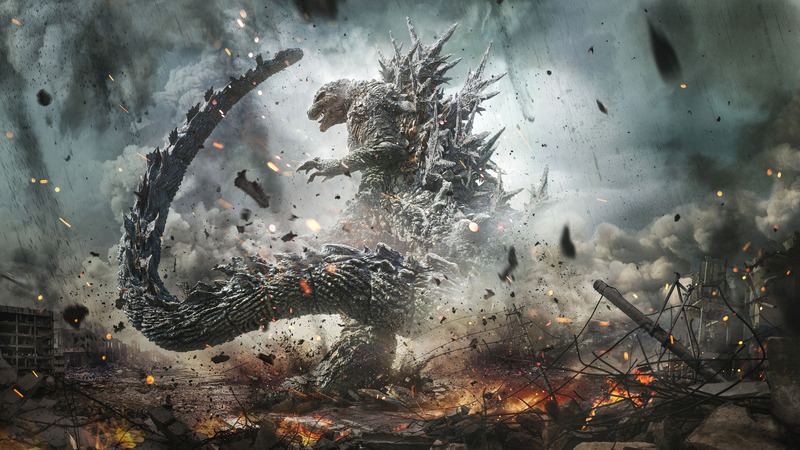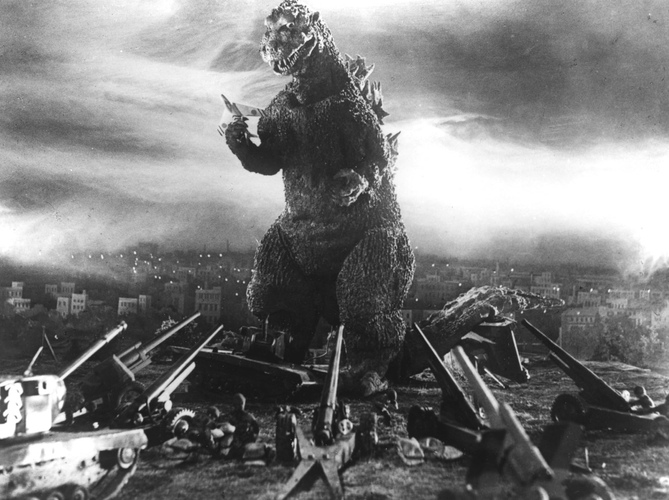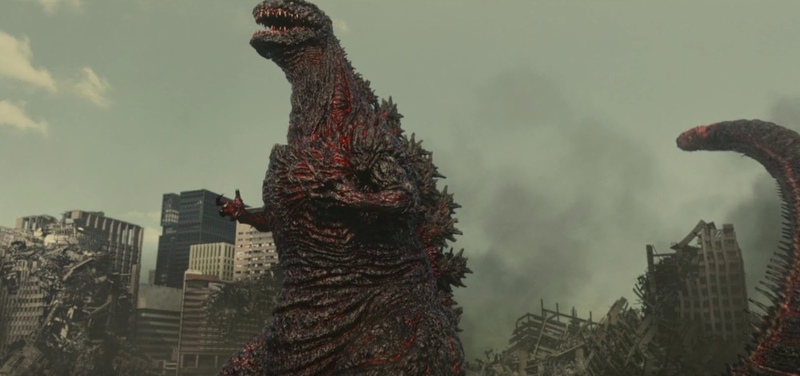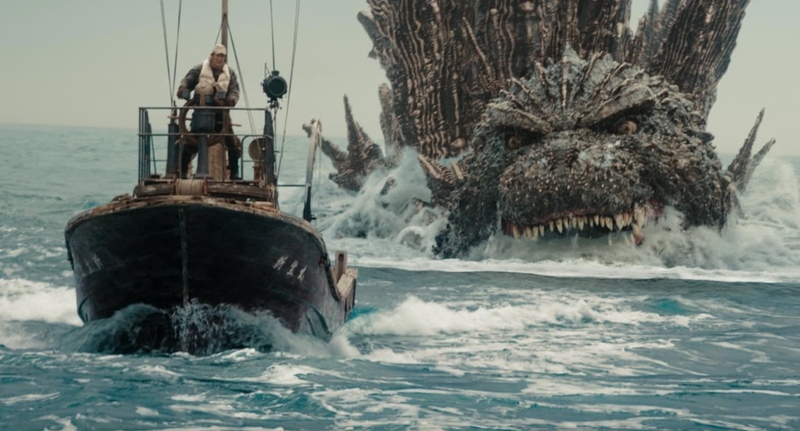
Godzilla has been many things in his 70-year-long existence. He’s always a kaiju (giant monster), but at various points, he’s been a metaphor, an ally, a cartoon, a parent, a video game character, and even an adversary of Superman. In all of these forms, he has been a wild success, a key figure in bringing Japanese filmmaking to the masses and popularizing monster movies, earning his title as King of the Monsters. That said, there are some iterations of Godzilla that resonate and endure more than others. The key aspect that carries through these standout entries in the Godzilla franchise is one that has been there from the start: Godzilla works best when he’s terrifying.
Godzilla’s Horror Origins

Let’s go back to the original film, Toho Pictures’ 1954 “Godzilla.” Mysterious boat sinkings, wildlife phenomena, and attacks on small villages led the Japanese government to send reporters and scientists to investigate what’s been happening. What they discover is Godzilla, an ancient creature awakened by nuclear testing that proceeds to decimate Tokyo through his size and iconic atomic breath before eventually succumbing to a powerful new weapon.
While the special effects aren’t on par with today’s tools, seeing Godzilla destroy building after building with no means of stopping him is still bone-chilling. It’s also not hard to see the intentional parallels between “Godzilla” and the atomic bombings, which, at the time, had happened less than 10 years ago and were still traumatizing to the Japanese consciousness. Even the “victory” at the end of the movie involves a weapon that the characters acknowledge would more than likely be developed as a weapon by other nations to use against each other.
Godzilla would remain the main antagonistic force for the next few movies, but as the series introduced new monsters, Godzilla’s role began to shift. These other monsters, from King Ghidorah to Gigan, are presented as more sinister or evil than Godzilla, who begins to take on something of a heroic role. In other films, like “Destroy All Monsters,” any destruction Godzilla causes is because he’s being controlled by nefarious forces like aliens (seriously) or as collateral damage.
This isn’t to say these films are bad. They all still hold a dear place in my heart from repeated viewings as a kid, but they’re not scary. Many of these Godzilla films play up the melodrama of the human characters and tend to get silly, as evidenced by the infamous “floating dropkick” GIF that periodically makes its way around social media. They’re fun movies and played a major part in increasing Godzilla’s popularity and marketability. They just don’t resonate as much as the times when Godzilla posed a major threat.
The reason for this is a fundamental disconnect between the lighthearted nature of the brighter films and the concept of Godzilla. A reptilian creature that towers above skyscrapers, emits radiation, and is nearly unstoppable is nightmarish. Obviously, nothing like this could ever exist, but if it did, it would always be frightening. There’s no way for it not to be. The most recent American Godzilla films made by Legendary Pictures have quickly devolved into the “Godzilla as a hero trope,” but credit is due the 2014 “Godzilla” for playing on the sense of scale to make Godzilla terrifying. The sheer size of him, and the way the film intentionally places the camera to give viewers a frame of reference for just how massive he is, restores some of that fear that Godzilla should instill.

Godzilla doesn’t even necessarily have to be the villain of the story to be scary. In 1995’s “Godzilla vs. Destroyah,” Destroyah is definitely more antagonistic (and pretty scary to look at too). But in this film, Godzilla’s heart, which emits radiation to power his abilities, has gone into overdrive and leaves him in constant pain and with bright burning patches of flesh on his body. Even worse, if his heart gets too hot, it’ll cause an apocalyptic nuclear meltdown. While the threat is mostly averted by the end of the film (not without major losses), it reinforces the idea that even in a situation where Godzilla might be an ally to mankind, he’s not something that can ever be fully controlled or counted upon.
Toho’s Modern Revitalization of the Franchise

After “Godzilla vs. Destroyah” the franchise went into a period of relative dormancy, with the Japanese films not gaining as much traction with the Western world and Roland Emmerich making a 1998 version that we don’t talk about. It’s not a coincidence that after this, the revitalization began from the restored sense of fear from the 2014 film and was fully ignited by perhaps the most terrifying film in the franchise: 2016’s “Shin Godzilla.”
“Shin Godzilla” is a nightmare. A Toho reboot of the franchise, the movie follows a new, horrifying version of the monster. Just as the original reflected the era’s trauma and fear of nuclear holocaust, “Shin Godzilla” adapts its terror to the modern age. This version of Godzilla is the result of wanton pollution and environmental contamination, and it shows. This Godzilla goes through multiple grotesque mutations, with open sores, misshapen body parts, and seeping blood. Perhaps even worse than the monster is the response to it. The Japanese government is rendered completely helpless in the face of the threat, drowning in a sea of bureaucracy and procedural hurdles as Godzilla ravages the country. The scariest thing may not be a disaster — it’s knowing that our leaders are not prepared for it.
Godzilla as Humanity’s Worst Fears

The most recent film, “Godzilla: Minus One,” which just won the Oscar for Best Visual Effects, proves that fear can work on a personal level as well. The film effectively mirrors the same nuclear worries of the original (with this version of atomic breath the closest to an actual nuke it has ever been) and ties it into the main character, Kōichi Shikishima (Ryunosuke Kamiki), struggling with his sense of honor and purpose.
This is what makes a horrifying Godzilla the best form of the character. The creature in and of itself can inspire awe and fear, but the real terror comes from using Godzilla to explore the very real threats and fears that we have in the real world. A giant lizard isn’t going to crush us anytime soon, but a conflict that escalates too quickly — a polluted environment or a loss of purpose — are all very real dangers.
Godzilla continues to have a huge cinematic presence. “Godzilla x Kong: The New Empire” is set for release on March 29, and Toho will seemingly always have the ability to create a Godzilla story that grips the audience’s imagination. There’s room for different interpretations and adventures featuring the King of the Monsters, and public interest in the franchise is as strong as ever. In a world that gets more complicated and worrisome by the day, the best of these adventures are the ones where Godzilla allows us to explore and examine our fears.
Let’s hope as the franchise continues we get more versions of Godzilla that send chills down spines.
